Minneapolis’s Powderhorn neighborhood takes its name from Powderhorn Park Lake, a small lake shaped like a powder horn. Developed mainly between 1905 & 1920, Powderhorn contains some of the best architecture in the Twin Cities. Read more about the Powderhorn neighborhood…
About the Powderhorn Community
Powderhorn Park is located three miles south of downtown Minneapolis and includes Powderhorn Lake, playing fields, playgrounds and a park building that hosts community education  classes ranging from pottery to yoga. Powderhorn’s lake and park are used as the setting for the city’s May Day Parade which occurs on the first Sunday of May. Other enjoyable activities in the Powderhorn community are; The Powderhorn Art Fair, the Powderhorn Community Center and Powderhorn Park. The residents host a community gathering each month where they share food and conversation. Part of their annual line-up is a cookie and ornament exchange as well as an ice cream social over the summer. According to the 2010 census 8,655 people are proud to call Powderhorn their home.
classes ranging from pottery to yoga. Powderhorn’s lake and park are used as the setting for the city’s May Day Parade which occurs on the first Sunday of May. Other enjoyable activities in the Powderhorn community are; The Powderhorn Art Fair, the Powderhorn Community Center and Powderhorn Park. The residents host a community gathering each month where they share food and conversation. Part of their annual line-up is a cookie and ornament exchange as well as an ice cream social over the summer. According to the 2010 census 8,655 people are proud to call Powderhorn their home.
Neighborhoods in Powderhorn
Bryant
The neighborhood area was incorporated by the City in 1887, and by 1930 it was fully developed. Today it is a residential neighborhood with mostly single-family dwellings, interspersed with multifamily buildings mainly in its northwestern quadrant. Bryant neighborhood was named for William Cullen Bryant, who was an American poet who lived from 1794 to 1878.
Powderhorn Park
Powderhorn Park is mainly a residential neighborhood, where single-family houses and narrow residential lots are prevalent. The neighborhood was annexed by the City in 1887 and most of the housing was built by 1920.
Bancroft
The neighborhood is named for the Bancroft elementary school, which was named for George Bancroft, an American historian born in 1800. The Bancroft neighborhood consists mostly of single-family houses built before 1940. The neighborhood also has some commercial development along Bloomington Avenue and 38th Street.
Whittier
If you’re looking for a neighborhood full of great architecture then Whittier may just have what you’re looking for. This neighborhood is home to the prestigious Minneapolis Institute of Arts.
Lyndale
The neighborhood is predominantly residential, with a large percentage (about 36 percent) of land in parcels occupied by multifamily residential uses. Commercial uses tend to concentrate along Lake Street. The Lyndale neighborhood has one of the highest populations of artists in the nation.
Central
This is a residential neighborhood that is experiencing great growth.
Corcoran
Named in honor of William Wilson Corcoran (1793-1889), who founded the Corcoran Gallery of Art in Washington D.C., this is a mainly residential neighborhood — more than 60 percent of the land is used for single-family residences. The light-rail stop at Lake Street gives the neighborhood an easy connection to Downtown, the Minneapolis-St. Paul International Airport and the Mall of America.
Standish
Home to about 7,000 residents Standish is a mainly residential neighborhood. The new light-rail train line along the Hiawatha Avenue corridor connects the neighborhood with downtown, the Minneapolis-St. Paul International Airport and Mall of America. New homes are now being built along this corridor.
Your Powderhorn Realtor
If you’re looking to buy or sell in the Powderhorn Community of Minneapolis, contact us at 612-282-SOLD (7653) and we would be glad to help. Our Realtors can “search the Powderhorn MLS” on your behalf and send you any active listings in the Powderhorn neighborhood.
Contact Us For Your Real Estate Needs
